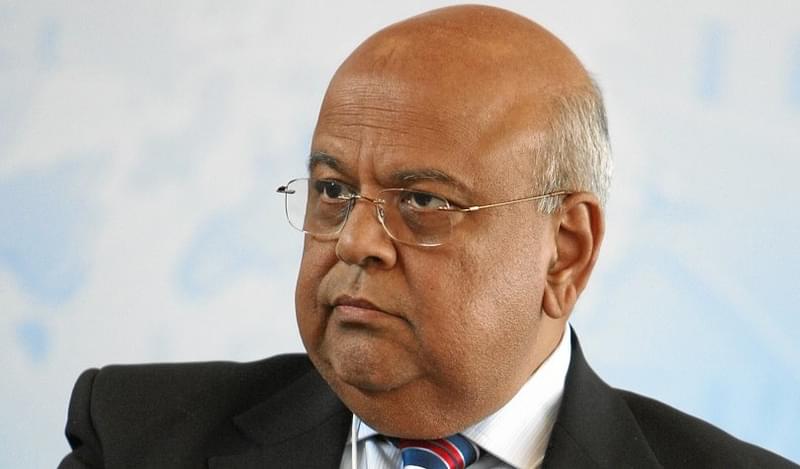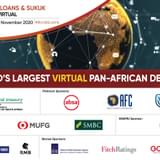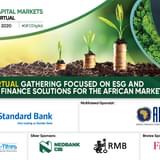A subdued economic environment coupled with a severe drought compromising the country’s performance in key sectors and severe political volatility have all weighed heavily on South Africa over the past year, prompting business to cut back on capital expenditure and new investment. In December 2016, the country reported a ZAR176bn (approx. US$12.7bn) current account deficit, which widened in the fourth quarter as mining and manufactured goods exports fell. With GDP growth forecast to hover around the 1-2% range in 2017 according to the IMF (it is worth pointing out that 1% is typically attributable to population growth alone), analysts are rightly concerned about the ability to generate strong positive economic momentum.
Was 2016 A Turning Point?
“There is a general expectation that the South African economy reached a turning point during 2016 with regards to GDP growth. The country is expected to see around 1% economic growth this year. In 2017, we expect consumer and business confidence to remain subdued. Investment levels by local and foreign companies will similarly be subdued until investors see greater certainty in economic policy. Government spending is hamstrung by slow economic growth – which translates into slow fiscal revenue growth – and the impact of delayed fiscal consolidation on debt levels,” explains Christie Viljoen, an economist and financial risk management consultant with KPMG.
Currency woes, prompted in part by economic and interest rate uncertainty in the US as well as volatile commodity prices, haven’t helped. According to data from Bloomberg, the top three most volatile currencies in the world are the Mexican peso, the Turkish lira, and the South African rand. Analysts’ perceptions of the rand as one of the most volatile currencies in emerging markets were largely maintained through 2016, despite a broad improvement from lows of ZAR16.78 to the ZAR13.7 per US dollar range over the course of the past 12 months. Between August and November 2016, inflation rose from 5.9% to 6.6% according to data from the South African Reserve Bank, prompting concerns the currency could adversely impact borrowers.
“South African companies are concerned that monetary policy will tighten further this year, resulting in higher interest rates on domestic financing through banks. However, the biggest concern is that South Africa will see a sovereign ratings downgrade to sub-investment grade by at least one of the three major rating agencies. This will also inflate international borrowing costs, both via higher interest rates but also due to an associated weakening in the exchange rate,” Viljoen says.
Impressively, and contrary to the expectations of many analysts trumpeting its inevitability, South Africa managed to escape a downgrade of its foreign or local currency debt to sub-investment grade by either of the big three rating agencies not once, but three times, as repeated government concessions in the form of spending curbs kept Fitch, Moody’s and S&P at bay. South Africa's budget deficit grew to US$12.2bn in 2016, and while official figures have yet to verify whether the country’s government was able to reduce its government deficit to a disciplined 3.2% of GDP (down from 3.9%), major rating agencies seem to be placated for the time being. With the exception of S&P, its local currency debt ratings are still a couple of notches above junk status, despite a persistent negative outlook.
“The cost of financing will be a key focus for us in 2017 as we look to refinance existing liabilities; unfortunately, it’s not looking good,” explains one treasury director at a South African clothing retailer, who preferred to remain anonymous. “If we do see a downgrade to sub-investment, and it looks like we probable will, we could see a massive selloff of both our own bonds among many others.”
This year is bound to see an escalation of the kind of political infighting that dominated 2016, which at many points largely centred on the increasingly tenuous relationship between the country’s Finance Minister Pravin Gordhan and President Jacob Zuma. With the latter feeling increasingly threatened by the former’s potential bid for leadership of the ANC, and a conference to select the party’s next leader less than a year away, analysts expect politics to play an overweight role influencing investor sentiment and exchange rates.
“Our analysis already suggests political volatility is growing in its influence over the performance of the currency, which saw a broad stabilisation towards the end of the second half of 2016 but which might see a reversal [given the leadership contest later in the year],” says Elena Ilkova, a credit analyst at RMB.
Select Bright Spots but Volatility to Remain
South African corporates – including public and private sector blue chips – have to some extent shunned the listed debt market in favour of loans and privately place corporate paper in 2016, with the continent as a whole seeing record volumes of bank borrowing (US$35.4bn of loans – eclipsing 2015's total by 14.8%, according to data from Thompson Reuters). South Africa saw a total of US$16.28bn in bilateral and syndicated loans throughout 2016, Some of the year’s larger deals included the US$2.7bn bridge loan for mining company Sibanye Gold, used to finance its US$2.2bn acquisition of US-based Stillwater Mining; Gold Fields’ US$1.29bn triple tranche facility and RCF; and Eskom’s ZAR20bn (approx. US$1.4bn).
Bond issuance in 2016 was largely a reflection of the refinancing actions by established issuers as no new entities entered the listed debt market. The approximately ZAR93bn issued by the end of October (excluding Eskom’s ECNs and African Bank) is relatively modest compared to the almost ZAR59bn debt maturing in 2016, according to credit research published by Rand Merchant Bank (RMB). Nevertheless, we could see some bright spots – resulting in part from Basel III and NSFR rules due to kick in.
“The supply of bank senior bonds will reflect similar refinancing needs to those of 2016. Approximately ZAR27bn of senior unsecured debt matures in 2017, 76% of which falls in 1H17. We expect bank senior bond issuance to pick up in 2017 compared to the relatively modest ZAR33bn issued by the end of October 2016. The use of national discretion with regard to Basel III’s net stable funding ratio (NSFR) requirement reduced the banks’ need to issue long-term listed debt before NSFR comes into force on 1 January 2018. Combined with weak credit demand, banks notably pulled back on issuance in 2016 but we expect supply to resume in early 2017,” RMB analysts explained in a recent note.
Ilkova, one of the authors of the aforementioned note, says that while the supply of subordinated bank debt like additional tier 1 (AT1) instruments was fairly subdued in 2016 (there were just two AT1 issuances in South Africa that year), the potential relative shortage of bank senior paper might be partially offset by an increased supply of subordinated debt, including Tier 2 instruments. Approximately ZAR12bn of Tier 2 debt will reach its call dates with more than 80% concentrated in the second half of 2017, though pricing on AT1 issuances, and the opacity of South Africa’s implementation of the long-awaited resolution and recovery framework, should temper expectations somewhat.
“If there is further clarity on the long-awaited recovery and resolution framework, then there is potential for optimisation of capital structures. This optimisation would become a cost comparison between the preference shares currently qualifying as capital and AT1.”
“Our concerns for 2017 are both the gross issuance volume and the diversity of issuers. In 2016, 45% of the volume came from 10 property companies that collectively managed to exceed Mercedes-Benz, which alone accounted for 32% of the corporate issuance. In 2017, we believe that we will see a similar pattern: property and automotive, and limited issuance from industrial and mining sectors.”
“SOEs are looking to refinance less this year, and when they do need capital they rely increasingly on loans from commercial lenders or multilaterals. We have seen a number of issuers, who were previously able to raise five or seven-year money, walk away with three-year cash. The big question for 2017 is whether this will continue,” she adds.
Bankers who spoke with Bonds & Loans were much more optimistic about issuance volumes in 2017, despite exercising caution. David Renwick, Head of Global Finance at ABSA Capital says there are reasons to suspect automotive names like Mercedes Benz – and their many suppliers – may shy away from the credit market this year due to sluggish auto sales; according to the National Association of Automobile Manufacturers of South Africa, auto sales in the country fell 9.6% in 2016 – much of which was seen in the last quarter of the year, suggesting we may see continued declines.
There is relatively strong pricing momentum from Q4 2016 that will extend into Q1 and Q2 this year – barring any large domestic or international politics events, explains Kumeshen Naidoo, Head, Debt Capital Markets, Corporate and Investment Bank (CIB), Barclays.
“There are three important EU elections this year – in the Netherlands, Germany, and France. Pricing will also likely take cues from the first 100 days of a Trump presidency. On the local front, a major risk factor is the upcoming ANC leadership contest. Broadly speaking, sentiment seems to be that issuers want to get in earlier rather than later, particularly with potentially higher interest rates going forward,” he explains.
“Generally, however, recent auction results have been fairly positive. We are also seeing more companies restructure their debt in ways that allow their notes to qualify as high quality liquid assets (HQLA), making them much more appealing to bank treasuries that look to hold these kinds of instruments for liquidity reasons.”
For now, analysts suspect 2017 will see much of what was seen last year – currency volatility, modest corporate bond issuances, and political instability. What remains to be seen is how issuers and investors will continue to manage in an environment of sustained low growth. It has had some positive side-effects – Renwick says issuers are being pressured into becoming much more savvy when it comes to execution, and are much more conscious of the need to allay investor concerns by doubling down on transparency, or structurally enhancing deals. But with GDP on the decline over the past three years and a prolonged shift out of capital markets into loans being seen in many parts of the market over the past two years, bankers, among others, can be forgiven for expressing concern about the direction of the country’s capital markets – which, despite its depth and breadth when compared with neighbouring nations, are still quite young.









